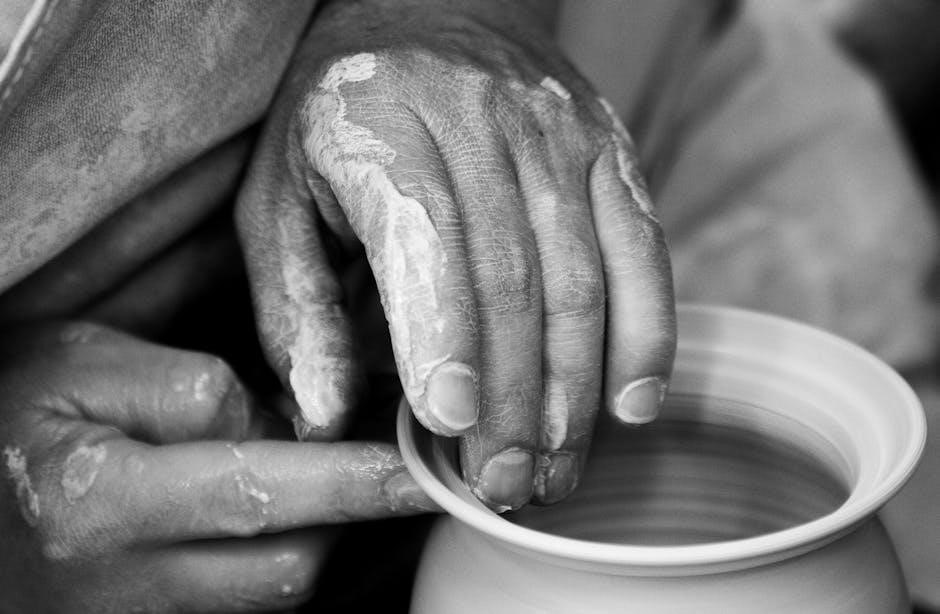Unlock your artistic potential while deepening your connection with the natural world. Nature drawing and journaling, guided by John Muir Laws’ insightful approach, blends art, science, and observation. It encourages mindful exploration and creative expression.

The Laws Guide: An Overview
The Laws Guide to Nature Drawing and Journaling, authored by John Muir Laws, serves as a comprehensive manual for aspiring nature artists and seasoned naturalists alike. It’s celebrated as a potent blend of art, science, and unwavering enthusiasm, offering a pathway to enhance sketching skills and foster a deeper appreciation for the environment. The book’s structure guides readers through fundamental drawing techniques, emphasizing observation skills and the integration of scientific understanding with artistic expression.
Laws’ guide provides practical advice for every stage of the process, from selecting the right materials to mastering advanced techniques. It emphasizes that anyone can learn to draw with practice and offers journaling prompts to stimulate creativity and exploration. The guide also highlights the importance of combining art and science, encouraging readers to observe the natural world with both an artistic and scientific lens. With its step-by-step instructions and inspiring illustrations, The Laws Guide is an invaluable resource for anyone seeking to connect with nature through drawing and journaling.

Essential Materials and Tools
Equip yourself for nature drawing with a sketchbook, pencils, erasers, and a sharpener. Consider adding watercolors, colored pencils, and a field guide for enhanced observation and artistic expression in your journal.
Choosing the Right Sketchbook
Selecting the right sketchbook is crucial for nature drawing and journaling. Consider the size, paper type, and binding. A smaller sketchbook is portable, while a larger one offers more space. Smooth paper suits pen and ink, while textured paper is better for charcoal and pastels.
Hardbound sketchbooks are durable, while spiral-bound ones lie flat. Weight of paper is also important. For watercolor, choose heavier paper to prevent bleed-through. Consider your preferred medium when deciding on the paper’s tooth, or texture. Experiment with different sketchbooks to find what best suits your style and needs.
Think about where you will be using your sketchbook. Will you be hiking with it, or primarily using it at home? Durability and portability play a key role in your decision-making process. Don’t be afraid to try a variety of options!
Selecting Drawing Instruments
Choosing the right drawing instruments is essential. Pencils are versatile, offering a range of hardnesses from hard (H) to soft (B). Harder pencils are great for fine lines, while softer ones create darker shades. Graphite sticks are useful for broad strokes and shading.
Pens, especially fine-liners and waterproof inks, are excellent for detailed work. Colored pencils add vibrancy. Watercolors offer a different approach, blending color and texture. Consider carrying a small set of travel brushes. Experiment with different tools to find what suits your style.
Erasers are as important as your drawing tools. Kneaded erasers are reusable and perfect for lifting graphite. White plastic erasers provide clean, precise corrections. Don’t forget a sharpener to keep your pencils ready for action. Ultimately, the best instruments are those you enjoy using.
Other Useful Supplies
Beyond basic drawing instruments, several other supplies can greatly enhance your nature journaling experience. A small ruler aids in precise measurements and creating accurate diagrams. A magnifying glass reveals intricate details of plants, insects, and other natural elements. Consider bringing along a small container for collecting specimens like leaves or feathers.
A water bottle and a snack will keep you comfortable during extended field sessions; A lightweight folding stool provides a comfortable place to sit. Don’t forget sunscreen, insect repellent, and a hat to protect yourself from the elements. A camera can capture scenes or subjects.
Finally, a small first-aid kit is always a good idea. Remember, being prepared ensures a more enjoyable and productive time in nature. Adapt this list to your needs.
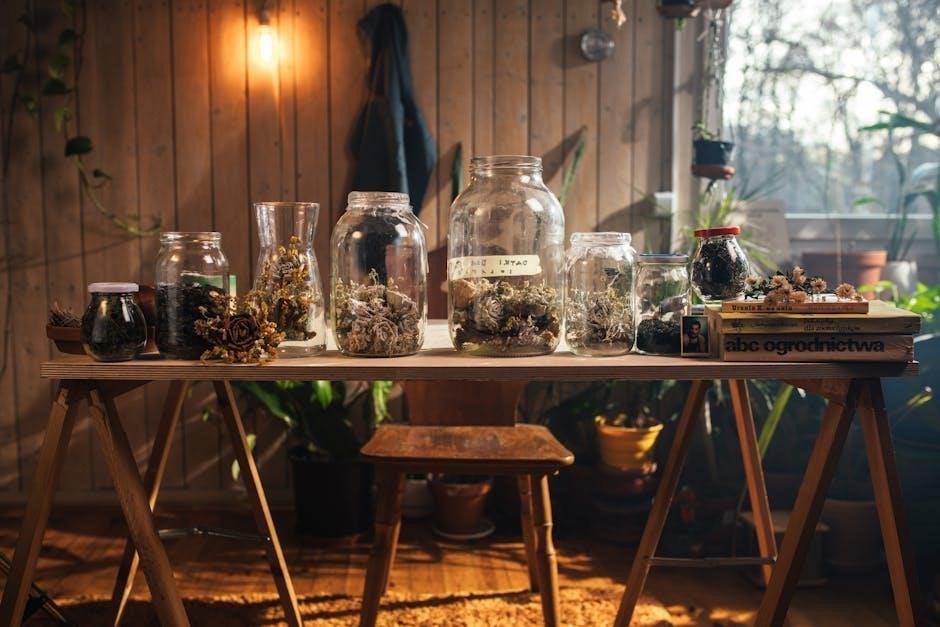
Fundamental Drawing Techniques
Mastering fundamental drawing techniques is essential for capturing nature’s beauty. This involves understanding basic shapes, perspective, texture, and detail. Practice these techniques to enhance your observational skills and artistic expression when journaling outdoors.
Basic Shapes and Forms
Nature drawing begins with recognizing and simplifying complex subjects into basic shapes and forms. Mastering these fundamentals allows for accurate representation and creative interpretation. Start by identifying simple shapes like circles, squares, triangles, and cylinders within the subject you’re observing.
Practice drawing these shapes in various orientations and sizes. Observe how light and shadow affect these forms, creating depth and dimension. As you become more comfortable, combine these shapes to construct more complex objects;
Focus on capturing the essence of the subject rather than striving for perfect realism. Understanding basic shapes enables you to simplify intricate details and focus on the overall structure. Experiment with different drawing tools and techniques to explore how they interact with these fundamental forms.
Regular practice and mindful observation will strengthen your ability to perceive and represent the underlying structure of nature. This skill is crucial for effective nature drawing and journaling.
Understanding Perspective in Nature
Perspective is vital for creating realistic depth and spatial relationships in nature drawings. It involves understanding how objects appear to change size and position based on their distance from the viewer. Linear perspective, with its vanishing points and converging lines, is a fundamental concept.
Observe how parallel lines, such as tree trunks or branches, seem to converge as they recede into the distance. Notice how objects appear smaller the farther away they are. Aerial perspective also plays a significant role. Distant objects tend to have less contrast and appear bluer or grayer due to atmospheric haze.
Practice drawing simple scenes with clear perspective, focusing on establishing a horizon line and identifying vanishing points. Pay attention to how the texture and detail of objects diminish with distance. Experiment with different viewpoints to understand how perspective affects the composition of your drawings. By mastering perspective, you can create immersive and believable depictions of the natural world in your nature journal.
Adding Texture and Detail
Texture and detail bring your nature drawings to life, adding realism and depth. Start by observing the surface qualities of your subject – is it smooth, rough, bumpy, or scaly? Use different drawing techniques to represent these textures. Stippling (dots), hatching (parallel lines), and cross-hatching (intersecting lines) are effective methods.
Vary the pressure and spacing of your marks to create different tonal values and simulate the feel of the texture. For example, use short, dense lines to represent rough bark, and smooth, flowing lines for a leaf’s surface. Pay attention to the direction of light and shadow, as this can accentuate texture.
Details, such as veins in leaves, patterns on bark, or individual feathers, enhance the realism of your drawings. Use a sharp pencil or pen to capture these fine details. Remember, adding too much detail can make your drawing look cluttered, so focus on the most important features.
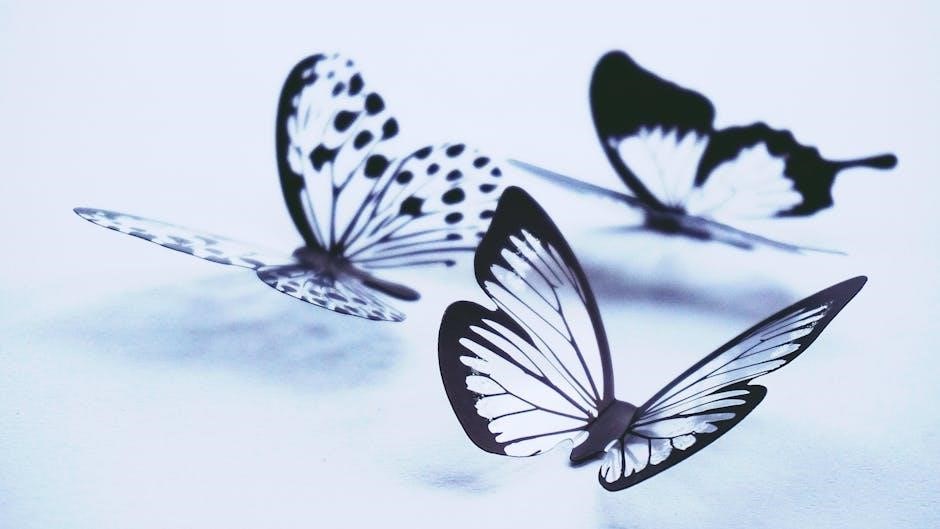
Journaling Prompts and Ideas
Elevate your nature journaling experience with engaging prompts that spark creativity and deepen observation. Start by documenting the date, time, and location of your observations. Record the weather conditions, including temperature, wind speed, and cloud cover. Describe the overall environment, noting dominant plant species and any animal activity.
Explore specific questions: What is the most striking feature of this scene? How does the light affect the colors and textures? What sounds do you hear? What emotions does this place evoke?
Consider focusing on a single element, such as a leaf, flower, or insect. Sketch it from different angles and describe its characteristics in detail. Research its scientific name and ecological role. Reflect on its significance within the larger ecosystem. Use these prompts to transform your nature journal into a dynamic record of your explorations.

Combining Art and Science
Nature journaling beautifully merges artistic expression with scientific inquiry, fostering a holistic understanding of the natural world. By observing and recording details through both drawing and writing, you engage different parts of your brain, enhancing memory and comprehension.
Art provides a visual language to capture form, color, and texture, while scientific notes add factual information about species identification, behavior, and ecological relationships. This integrated approach encourages careful observation, critical thinking, and a deeper appreciation for the interconnectedness of life.
Use drawing to illustrate anatomical structures, plant morphology, or habitat features. Supplement your sketches with written descriptions of observed behaviors, environmental conditions, or scientific classifications. This combination of art and science transforms your journal into a powerful tool for learning and discovery.
Developing Observation Skills
Sharpening your observation skills is paramount in nature drawing and journaling, transforming casual glances into focused investigations. Begin by slowing down and consciously engaging your senses: sight, smell, sound, touch, and even taste (where appropriate and safe).
Pay attention to details that might typically go unnoticed – the subtle variations in leaf color, the intricate patterns on a butterfly’s wings, or the unique texture of tree bark. Practice active listening to identify different bird calls or the rustling of leaves in the wind.
Use your journal to record these observations, noting specific characteristics, measurements, and comparisons. Ask questions, make hypotheses, and test your assumptions through further observation. Embrace curiosity and cultivate a habit of mindful awareness to unlock the hidden wonders of the natural world.
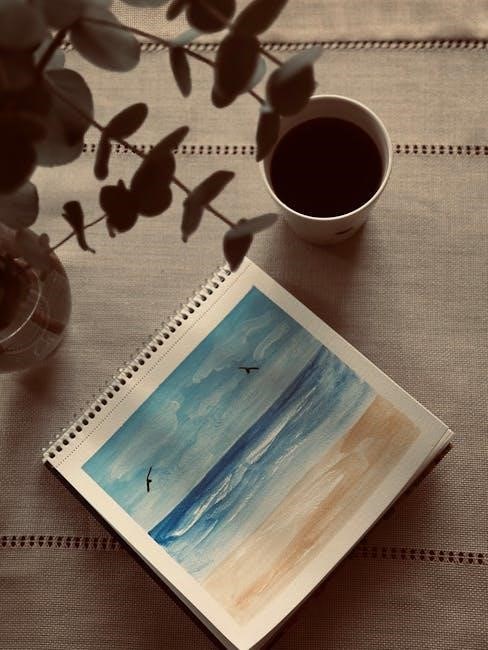
Tips for Beginners

Embarking on your nature drawing and journaling journey can be both exciting and a little daunting. Start simple: don’t aim for perfection, focus on enjoying the process. Choose a subject that interests you, even if it’s just a single leaf or a common backyard bird.
Gather basic supplies: a sketchbook, pencil, and eraser are all you need to begin. Don’t worry about fancy techniques; start with simple shapes and lines. Observe your subject carefully, noting its basic form, colors, and textures.
Don’t be afraid to make mistakes; they are valuable learning opportunities. Practice regularly, even if it’s just for a few minutes each day. Most importantly, be patient with yourself and celebrate your progress. Remember, the goal is to connect with nature and express your unique perspective.
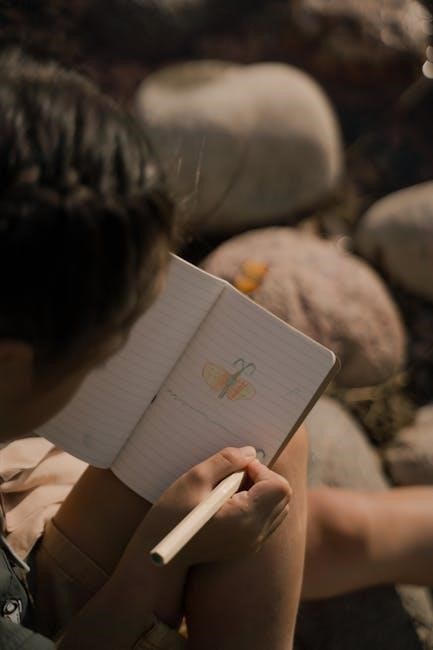
Advanced Techniques and Exploration
Having mastered the fundamentals, it’s time to push your nature drawing and journaling skills to the next level; Explore advanced techniques like watercolor washes, pen and ink hatching, and detailed botanical illustration. Experiment with different perspectives, compositions, and color palettes to create more dynamic and engaging journal entries.
Venture beyond familiar subjects and seek out challenging landscapes, intricate textures, and fleeting moments in nature. Incorporate scientific data, such as species identification, habitat information, and weather patterns, to add depth and context to your observations.
Challenge yourself to capture the essence of movement, sound, and even smell in your drawings and writings. Explore ways to integrate poetry, prose, and personal reflections into your nature journal.
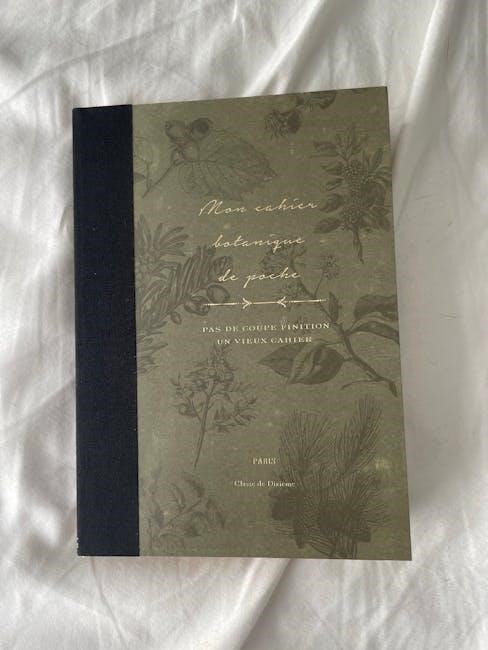
Inspiration from John Muir Laws
John Muir Laws, a modern-day naturalist and artist, serves as a profound source of inspiration for aspiring nature journalers. His passion for the natural world, combined with his artistic skill and dedication to education, shines through his work. Laws encourages everyone to embrace the practice of nature drawing and journaling as a way to deepen their understanding and appreciation of the environment.
His comprehensive guide offers clear, practical advice for artists of all levels, from beginners to experienced professionals. Laws emphasizes the importance of observation, curiosity, and a willingness to experiment. His approach fosters a sense of wonder and encourages individuals to connect with nature on a personal level.
